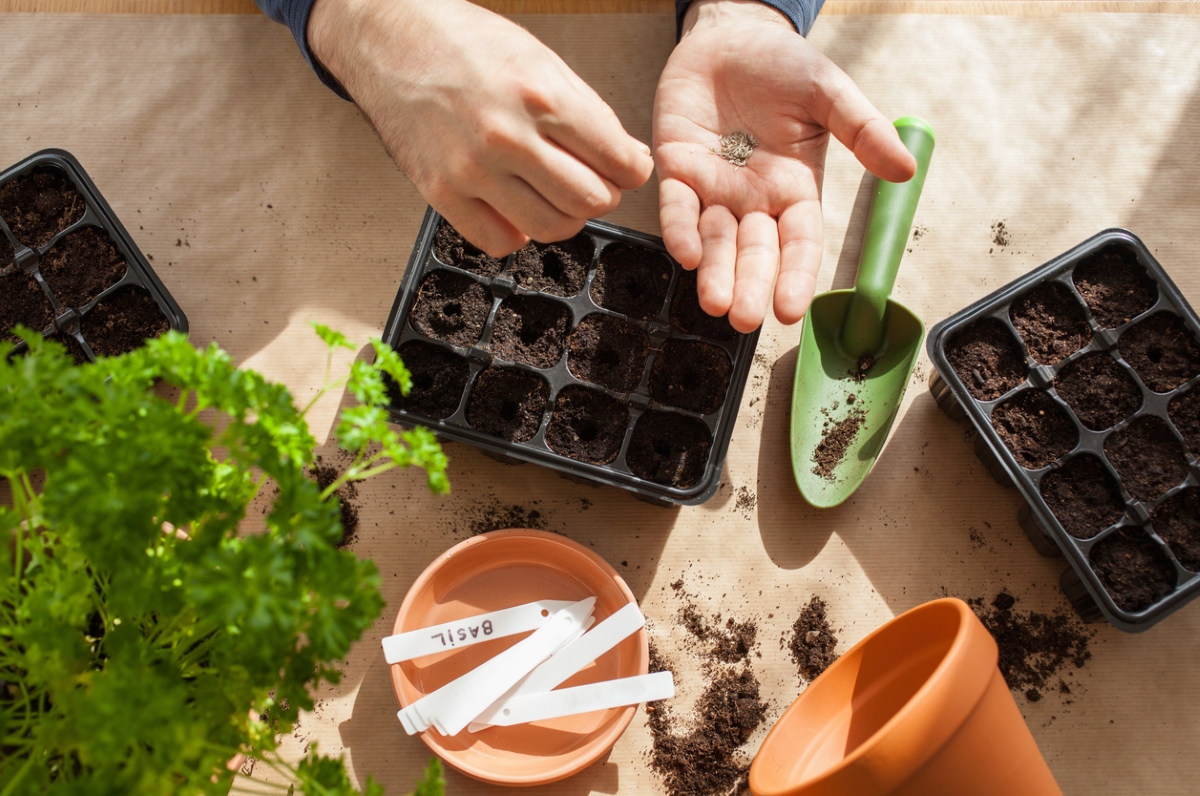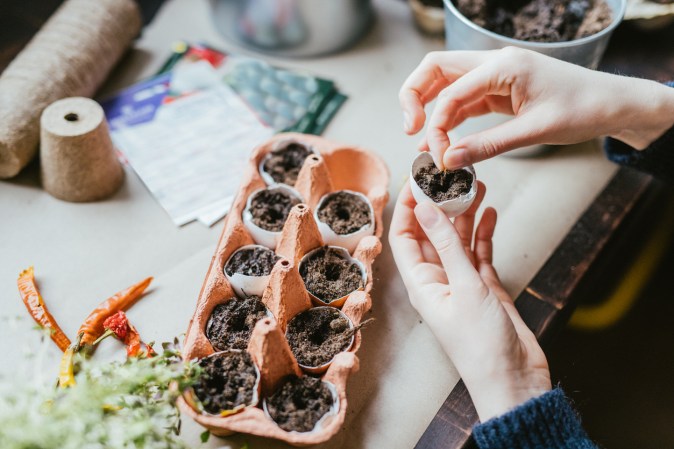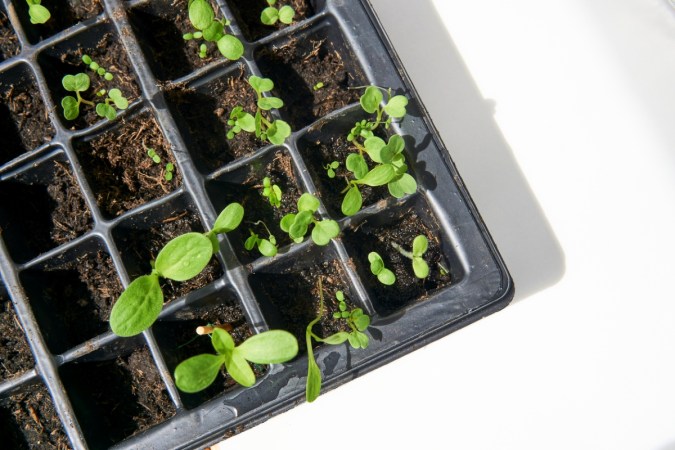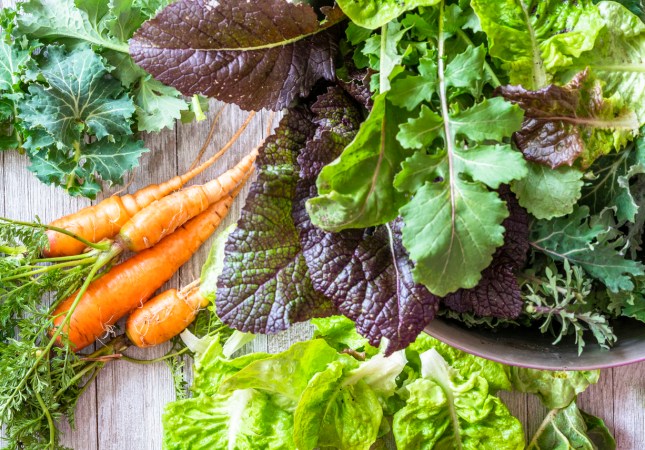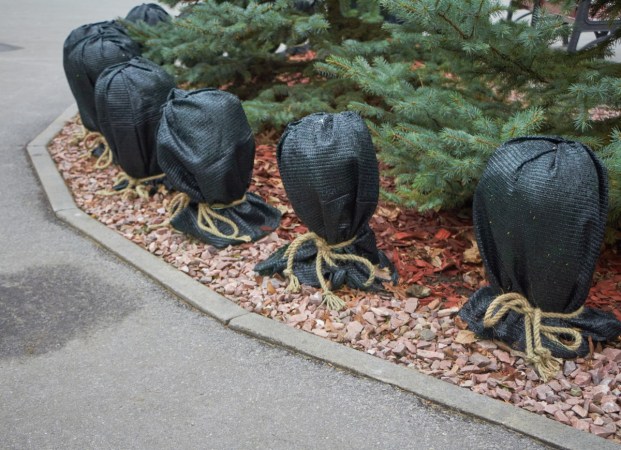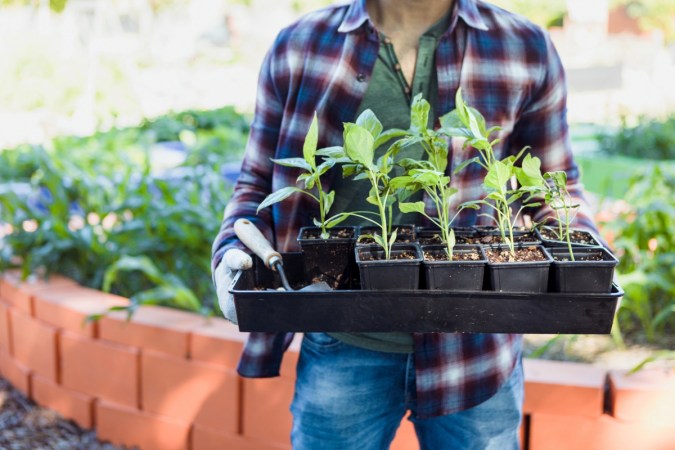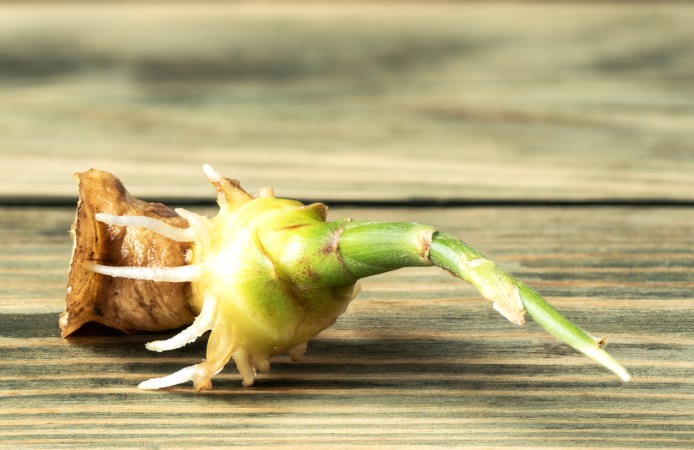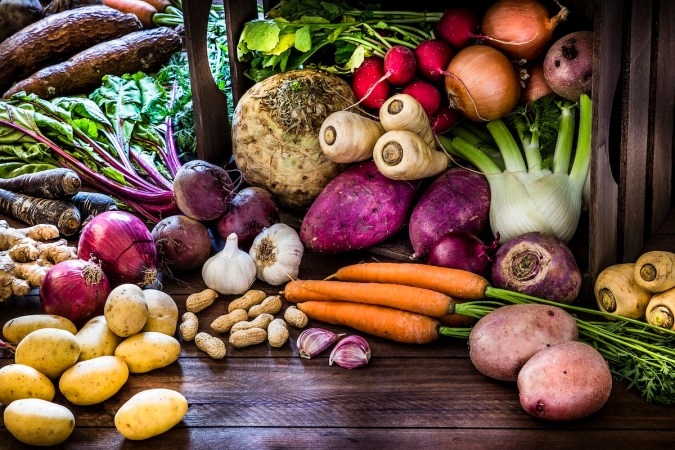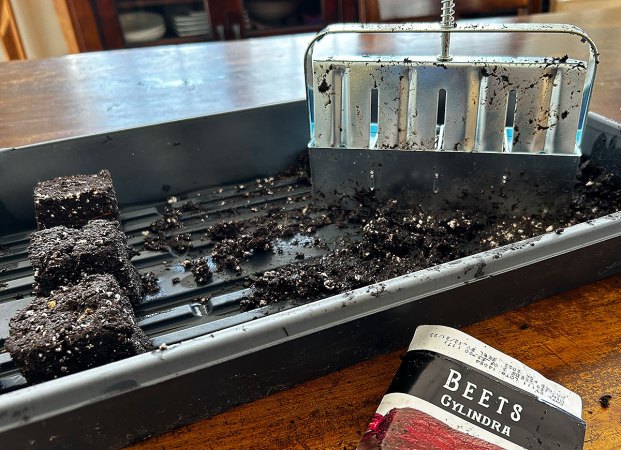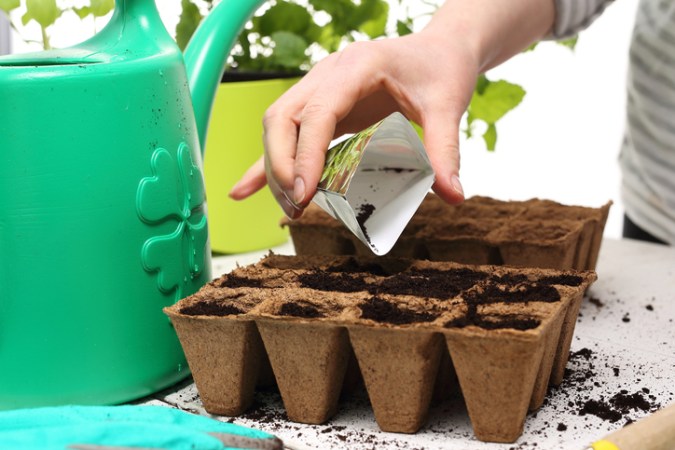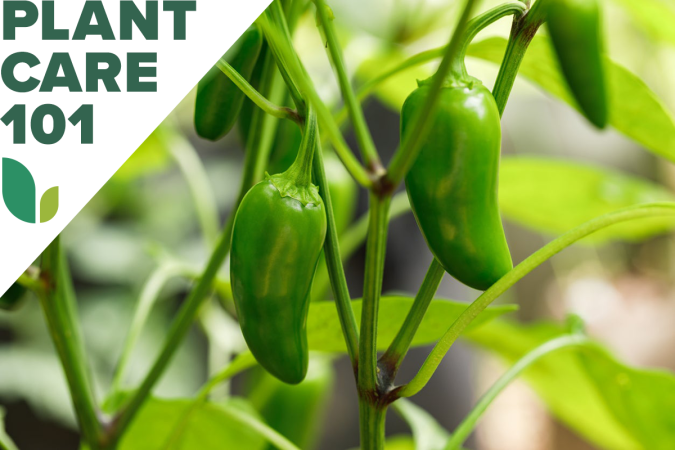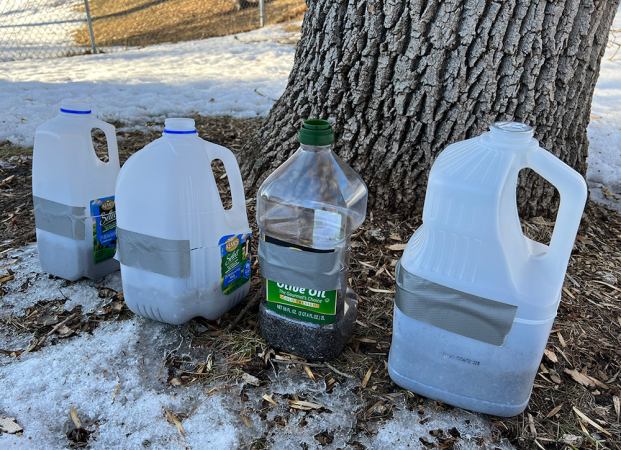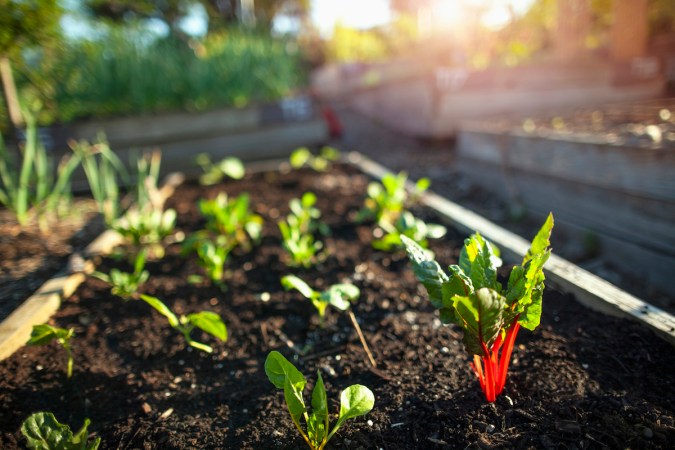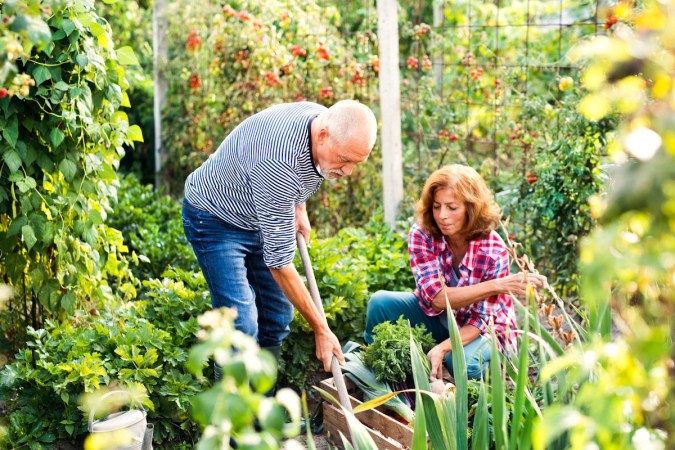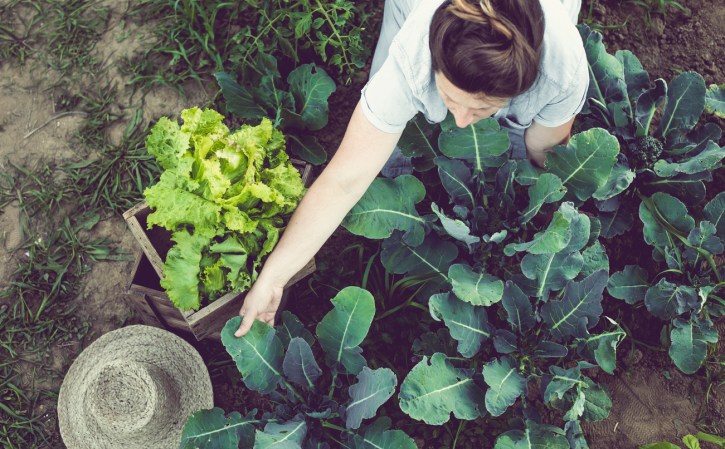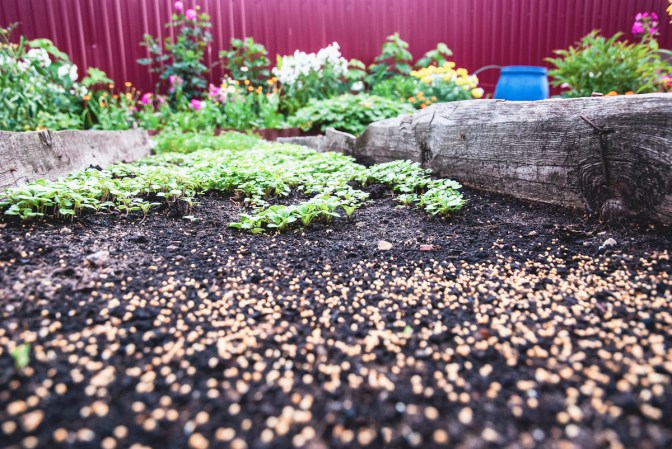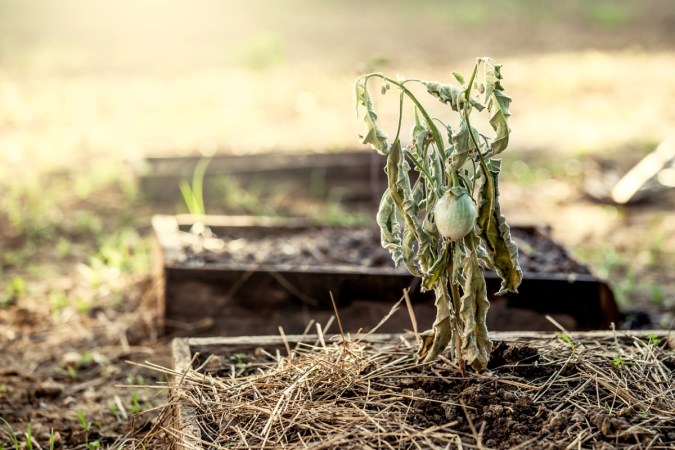We may earn revenue from the products available on this page and participate in affiliate programs. Learn More ›
Q: If I want to have a garden next spring, I need to know when to start seeds indoors. Is there a planting calendar for starting seeds indoors?
A: Tolstoy said, “Spring is the time of plans and projects.” Some gardeners replace “plans” with “planting” because they started planning as soon as autumn closed down last year’s garden.
Whenever you plan, it’s important to know the best time to start plants. Indoor seed starting is a delicate balance. Seeds sown too early can get leggy, outgrowing their pots before it’s time to transplant outdoors. Seeds sown too late might not have enough time to reach maturity during the growing season. The best time to start seeds indoors varies, depending on your USDA growing zone and the type of seed.
Why should you start seeds indoors?
Starting vegetable seeds indoors is a hobby for some passionate gardeners. Seed starting indoors “gives the gardener an advantage,” says John Lenz, horticulturist for Rare Seeds. “It is easier to monitor the soil moisture and the temperature, and this should result in a better germination rate.” Other advantages include earlier and bigger yields, and a more diverse selection of plants than may be available at local nurseries. It can also save money.
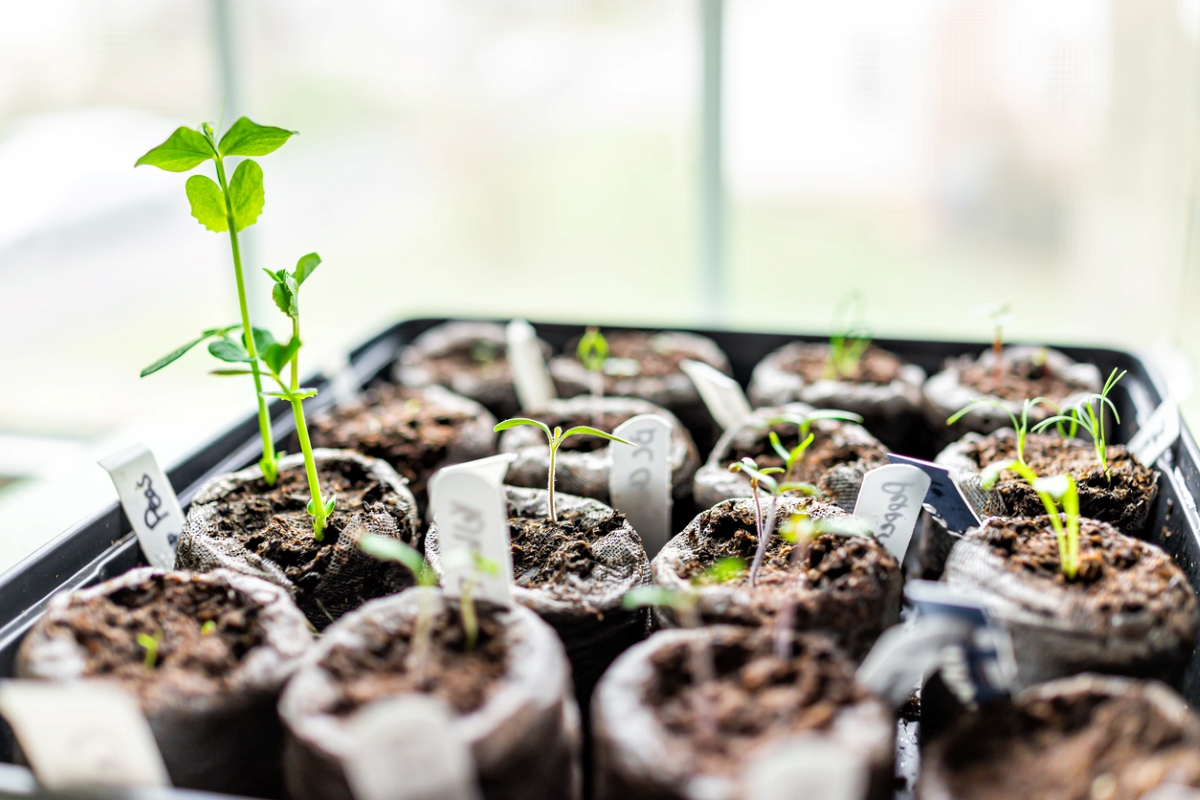
- Buying bedding plants from a nursery can be more expensive than starting seeds. Four-packs of bedding plants often cost at twice the price of seed packets, and individual vegetables in larger pots cost considerably more. Heirloom plants or unusual varieties can be even pricier—and harder to find.
- Indoor seed planting provides faster results than planting seeds directly in the garden.
- Starting seeds indoors usually results in better germination rates because you can control the conditions, ensuring seedlings get the proper amounts of sunlight, warmth, and water.
- Some plants, such as tomatoes, have a long growing season. To get the most yield, it’s best to start them early indoors.
- Seeds started indoors can produce faster growth, due to controlled conditions and protection from pests. It can also make the plants stronger.
RELATED: How to Save Seeds
Get to know your Hardiness Zone and microclimate.
Your USDA Hardiness Zone aids in knowing when to start seeds indoors and guides your planting schedule. Thirteen zones throughout the U.S. designate planting regions based on the average lowest temperature.
The USDA recently released a new Plant Hardiness Zone Map, for the first time since 2012. Based on 30-year averages of the lowest annual winter temperatures, and calculated from more temperature stations with better mapping techniques, this new map has shifted nearly half of the country into a warmer zone.
Microclimates are defined by growing zone, the length of the growing season, latitude, elevation, the amount of sun your garden spot gets, the amount of moisture, and wind. The right microclimate can lengthen your growing season. “Microclimates can extend or shorten the average number of frost-free days. A south-facing spot, protected from the wind, can add several weeks of growing season to the garden,” Lenz says.
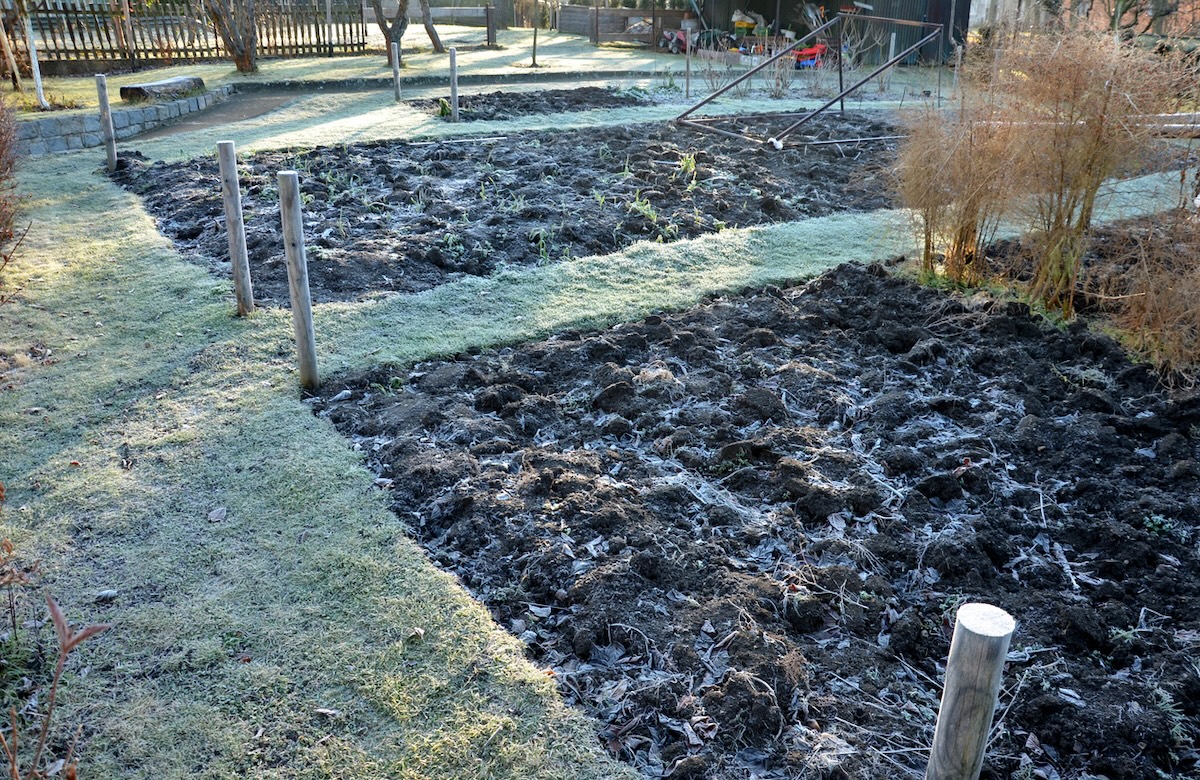
Look up your average last frost date.
The time between the last frost date in the spring and the first frost date in the fall identifies your growing season. Knowing the average last frost date can influence when you should start sowing seeds, both indoors and outside.
Lenz says that since most vegetables and flowers are grown as annuals, the growing zone doesn’t matter much. “The most important factor is the average last frost date and the average first frost date and how many frost-free days in between. The number of frost-free days will determine which crops will reach maturity in your area,” he says.
While these dates will vary according to your location, most seed packets list a general start date that indicates how many weeks until the frost-free date. For a more precise date, you can consult a seed-starting calculator.
Follow guidance on the seed packet or in the catalog.
Seed packets typically list the requirements of the seeds they contain. When to start tomato seeds indoors won’t be the same as when to start cucumber seeds indoors or when to start pepper seeds indoors. Cukes are a cool-season crop and need only 3 to 6 weeks of lead time, for example, while tomatoes and peppers are warm-season crops that need the soil to be warm. They should be started 6 to 8 weeks before the last frost, particularly because tomatoes take a long time to harvest. Most are ready to transplant after 4 to 6 weeks.
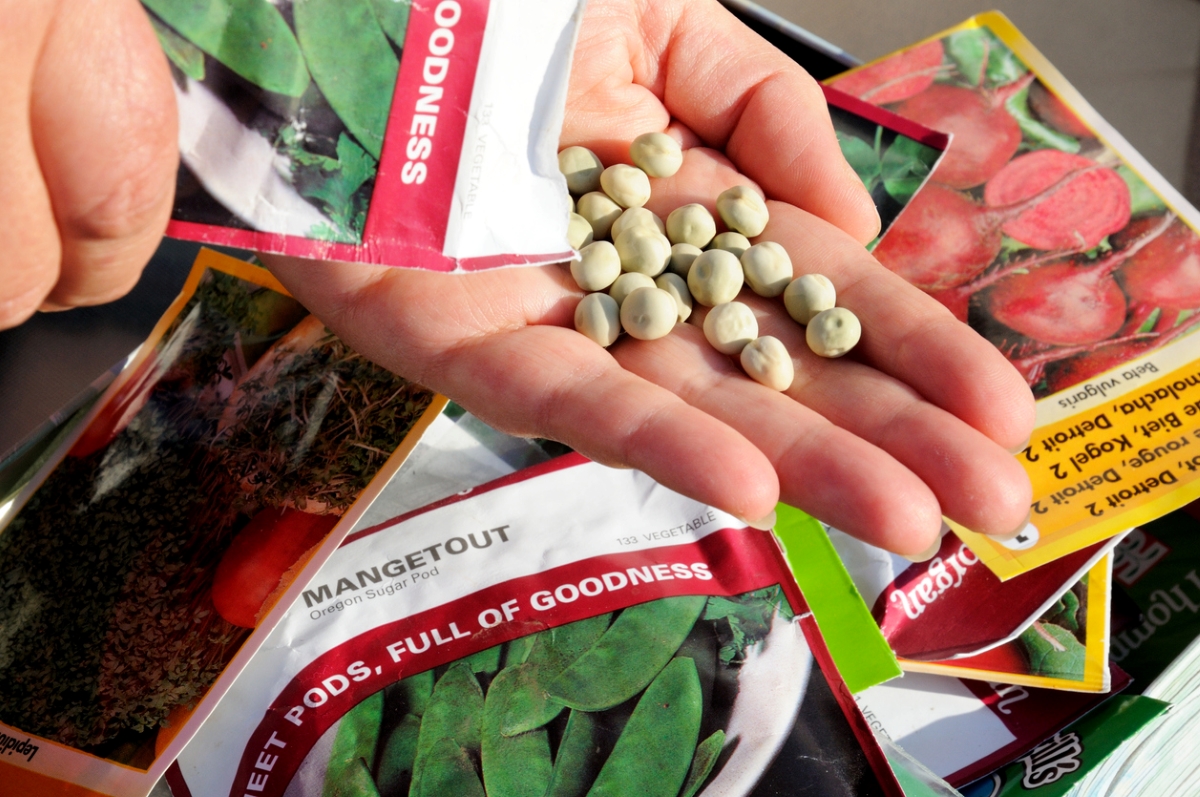
Your indoor seed-starting setup should include essentials such as a seed-starting tray with a plastic cover, along with:
- A special seed-starting mix for better germination
- Grow lights for consistent, even light
- A warming mat to encourage faster germination
- Plant labels to keep track of seedling types
- Optional accessories such as a fan to prevent damping off disease
Vegetables that like heat—tomato, pepper, and eggplant—need to be started in early spring to accommodate their longer growing seasons. Cool-weather crops like broccoli and cabbage can be started inside in June or July for fall planting.
RELATED: 12 Best Flowers for Starting from Seed
Depending on what you want to grow, you might not need to start seeds indoors.
Because tomatoes can take 100 days to harvest, gardeners often start them indoors to ensure they’ll get fruit during the summer growing season. But fast-growing species and cool-weather crops, such as lettuce, spinach, peas, radishes, and kale, don’t need to be started indoors. They can be directly sown in the ground, a raised garden bed, or a container after the last frost date, according to the packet instructions.
“Most root vegetables, like carrots and beets, should not be started early indoors,” Lenz advises. Because they put down an early root system, when transplanted, they tend to do poorly. Others that don’t transplant well include corn, watermelon, peas, beans, and sunflowers; they also fare best with direct sowing outdoors. In fact, most annual flower seeds are best sown directly into the garden.
Vegetable, herb, and flower seeds that will grow best by sowing directly into the garden include:
| Vegetables and Herbs | Flowers |
| Cilantro | Columbine |
| Dill | Cosmos |
| Okra | Four o’clock |
| Green beans | Larkspur |
| Lettuce | Marigold |
| Onions | Morning glory |
| Peas | Moonflower |
| Potatoes | Nasturtium |
| Sweet potatoes | Snapdragon |
| Squash | Sweet pea |
| Turnips | Zinnia |

